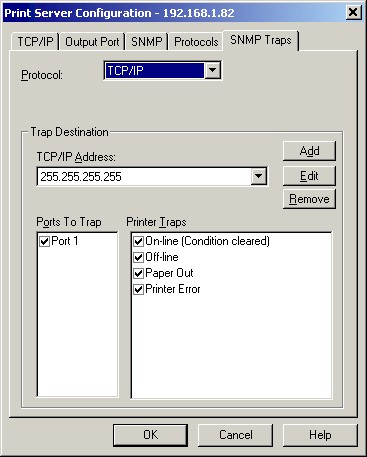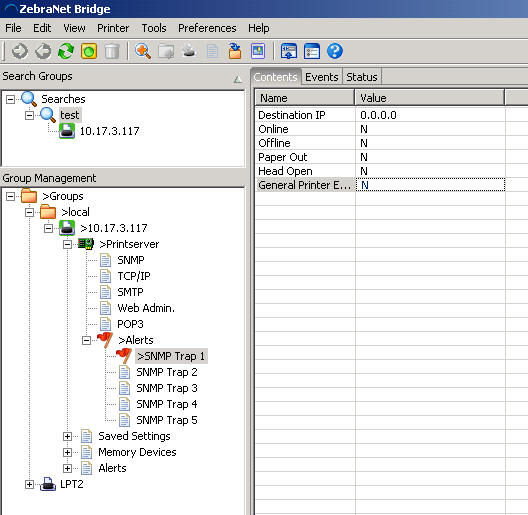

ZebraNet Print Server Alerts vs. Printer Generated Alerts
Stopping ZebraNet Print Server from Sending Multiple Alerts
There is a difference between SNMP Alerts sent from the ZebraNet Print Server and Alerts sent from the Printer.
Alerts sent from the ZebraNet Print Server can be managed in ZebraNet Bridge or ZebraNet View. Since the Print Server is connected to the parallel port on the printer, it is limited to 2 types of messages. The reason for this is how the parallel port communicated an error condition. The are only 2 pins on the parallel port that support error conditions, pins 12 & 13. Pin 12 supports Paper Out and pin 13 supports a General Error condition. In the picture below, even though 4 different Alerts (Traps) are listed, the print server will only send Paper Out or General Error.
The pins on the parallel port are either high or low. One state indicating an error condition. When in error state the parallel port continues to send error message to Print Server until error state is clear. If left in error condition over a period of time, your application that is being used to receive Alert notifications would be flooded with messages from one error condition.
To disable this you have to disable all SNMP Traps on the Print Server in ZebraNet Bridge or ZebraNet View. Select the print server you want to configure and go to the SNMP Traps tab:
ZebraNet View:

From here you can click Remove to clear the IP address and leave TCP/IP Address field blank. Do this for both TCP/IP and SNMP Protocol.
ZebraNet Bridge:
Drill down to Printserver > +Alerts > SNMP Traps:
Be sure to disable all 5 SNMP Traps by setting the IP address to 0.0.0.0 and each choice under Contents to N (no).

Then you can use Webview to set up specific Alerts on the Printer that will only be sent once for each time the error condition occurs. The reason this works the is the printer sends the Alerts just like regular data through the print server to the host, unlike the print server that relies on the parallel port to receive the error condition.